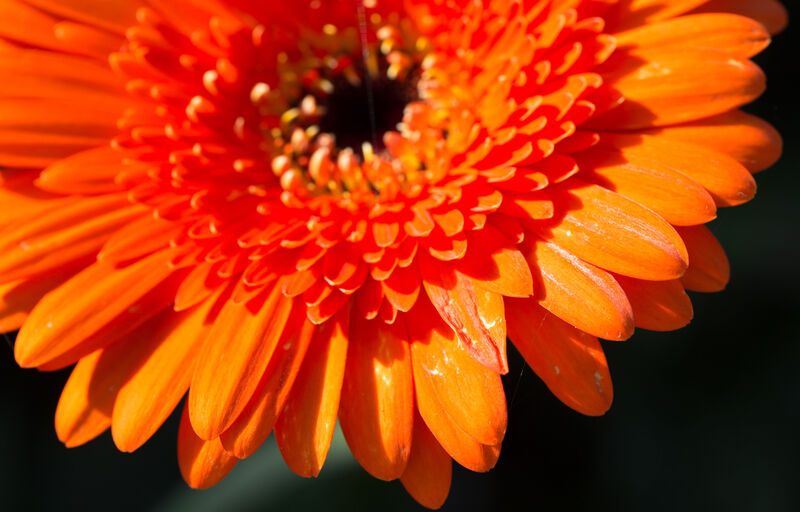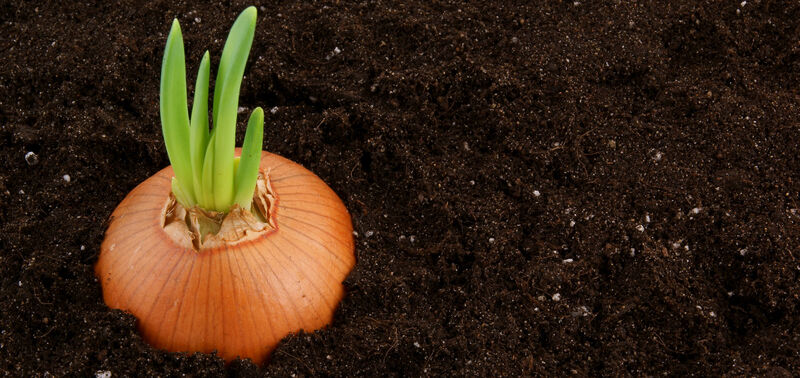
Thrips have long been a major threat to crops, but worryingly, the number of species of thrips around the globe is on the increase, and they are spreading more easily. More worryingly though is the fact that there isn’t yet a biological solution to control every species in every crop. Koppert is, therefore, investing in more R&D in this area.
Ornamentals cultivation consultant Jenette Douma cites the situation in the Netherlands as an example, where for many years it was assumed that only the Western flower thrips – Frankliniella occidentalis – was present in crops. It has since become evident – through crop rinsing at Koppert – that other species of thrips are active too. Investigations of leaf samples have instantly shown that infestations can be quite extensive.
"We have seen species such as the Echinothrips, Thrips setosus, and Dichromothrips corbetti appear. A few years ago, hydrangea cultivation was particularly affected by Thrips setosus, or Japanese thrips. This species was hardly scouted at all as growers had assumed that they didn’t have it in their crops – it turned out to be quite a nasty surprise when they did find it. Another example is Dichromothrips corbetti which affects phalaenopsis and is very difficult to get rid of. It had been around for some time but was confused with Echinothrips."
 Western Flower Thrips Frankliniella occidentalis damage on a gerbera flower
Western Flower Thrips Frankliniella occidentalis damage on a gerbera flower
Biological solutions
The fact that cultivation systems are always changing – new-style cultivation for example – and that pesticides are increasingly restricted are complicating factors. "It means that growers have fewer resources with which to intervene. Many pesticides are not particularly selective – they may well kill off thrips, but they also kill off the natural enemies of other pests at the same time. It’s very difficult to slot them into an integrated system while the grower has to increasingly rely on integrated solutions. Unfortunately, such solutions are not immediately available for all species of thrips in all types of crop."
Developments in the Netherlands are replicated elsewhere. The situation varies between continents and countries, but thrips march on nevertheless – and not only in ornamentals cultivation, where they cause cosmetic damage and lower ornamental value. Thrips have also been found in other industries, including fruit and vegetable cultivation and arable farming.
A strong chain approach
Koppert is, therefore, investing heavily in R&D. In ornamentals cultivation, roses and flowering pot plants such as hydrangeas and phalaenopsis are important target crops. Thankfully, crop rinses mean that we can test a wide range of potential strategies much more quickly than in the past.
Koppert is also looking at the role that propagators play. "It’s an issue that runs right through the chain," explains Jenette Douma. "Especially given the increasing volumes of starting material and semi-finished products being moved back and forth between continents and countries. This makes it much easier for species of thrips to spread, and that demands a strong chain approach, the most important aspects of which are good scouting and prevention."
"Control of thrips in ornamentals cultivation will need increasingly more biological solutions," explains consultant Jenette Douma.

New species of thrips in soft fruit
In outdoor soft fruit crops, especially strawberries, there have been reports of increased thrips infestation. Infestation by the Western flower thrips is on the increase, and since this particular species is extremely resistant to pesticides, more and more growers are moving over to biological crop protection.
"Alongside the species we’re used to seeing in strawberries, like Thrips tabaci, we’re starting to see new species appear in soft fruit like Frankliniella intonsa, Thrips fuscipennis, which attacks roses, and Thrips setosus," explains consultant Guido Roozemond. "Thrips setosus were clearly present in strawberries this year, but any damage and the extent of that damage is not yet clear." He points out that positive species of thrips do sometimes appear, such as Aeolothrips, which help to control other harmful species.
"The problems may be more severe in other countries. In Germany for example, there are growers who can no longer cope with chemicals. It requires such enormous effort to control the thrips with biological means that they have been forced to change their cultivation system, switching from long ever-bearer cultivation to shorter June-bearer cultivation."

A major problem in onion cultivation
At the start of July, as agricultural consultant Frank Druyff explains, the thrips infestation in open-field vegetable crops in the Netherlands increased considerably. There was heavy infestation in the key crops of onions (the second most important vegetable crop in the world after tomatoes), cabbage, and leeks. The problem was not only acute in the Netherlands, with France and Spain equally badly affected, primarily by Thrips tabaci (Onion thrips), which caused the most damage.
"In a major crop like onions, thrips are one of the biggest problems," explains Frank. "Around the world, we’re seeing other species of thrips in open-field vegetable crops, but we’re not sure if they are causing any damage. We’ll need to conduct more investigations."

Vegetable cultivation – thrips largely under control
In major greenhouse crops such as tomato, pepper, and cucumber, thrips are not a particularly significant problem. There are hardly any problems in tomato crops, and use of natural enemies has not been necessary. In cucumber crops, Amblyseius swirskii (Swirski Mite) is effective at keeping thrips under control.
In pepper crops, swirskii is the designated natural enemy used for preventive treatment, while Orius laevigatus (Thripor-I) is used curatively. "At the moment, we’re seeing that Orius is slightly less effective in pepper crops," explains vegetable consultant Alex Taal. "As to why, we’re currently investigating. It’s clear that this reduced effectiveness will mean that higher numbers of Orius will be needed per square metre to keep the thrips under control."
He emphasizes the importance of Horiver yellow and how its use can help growers to see whether or not a pest is there and how it is evolving.